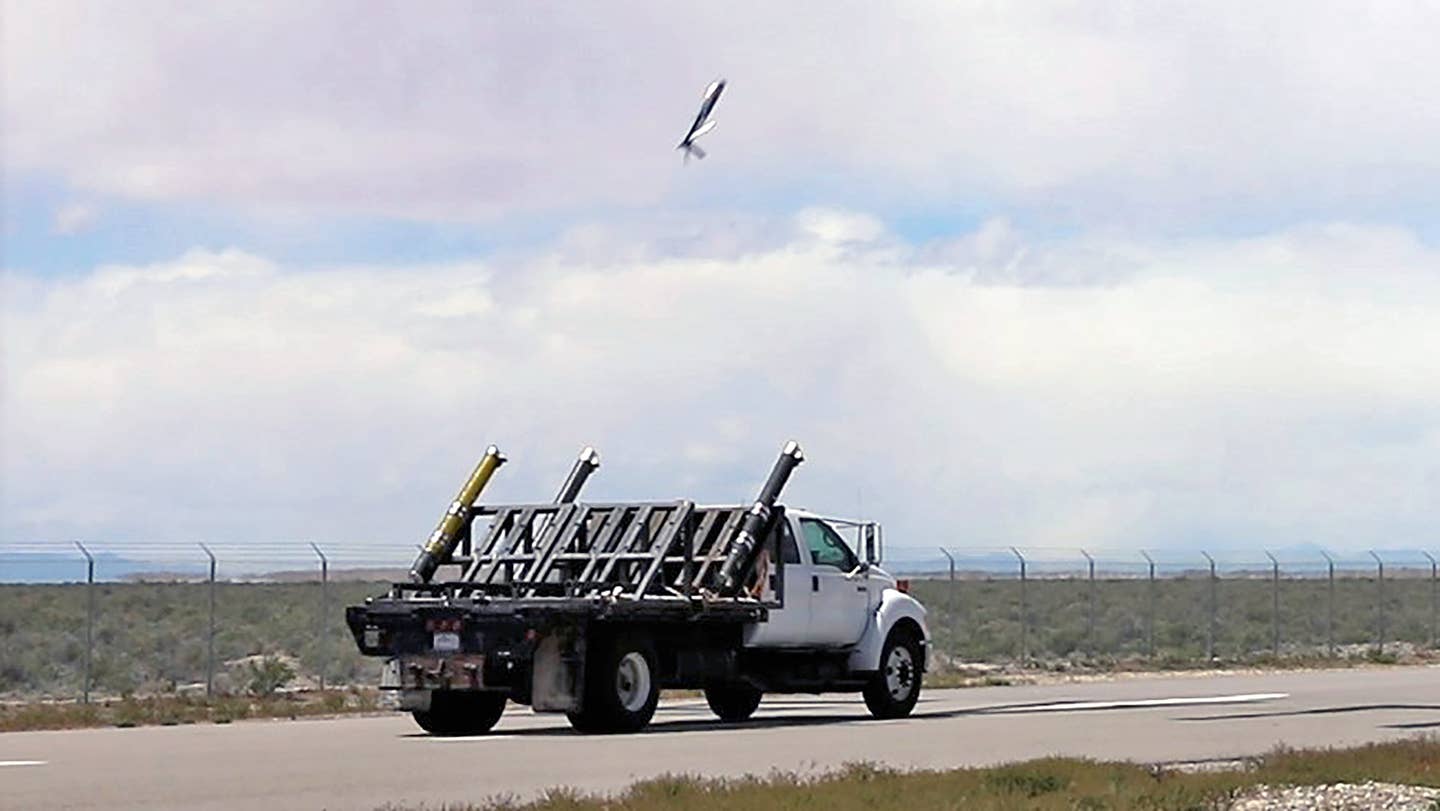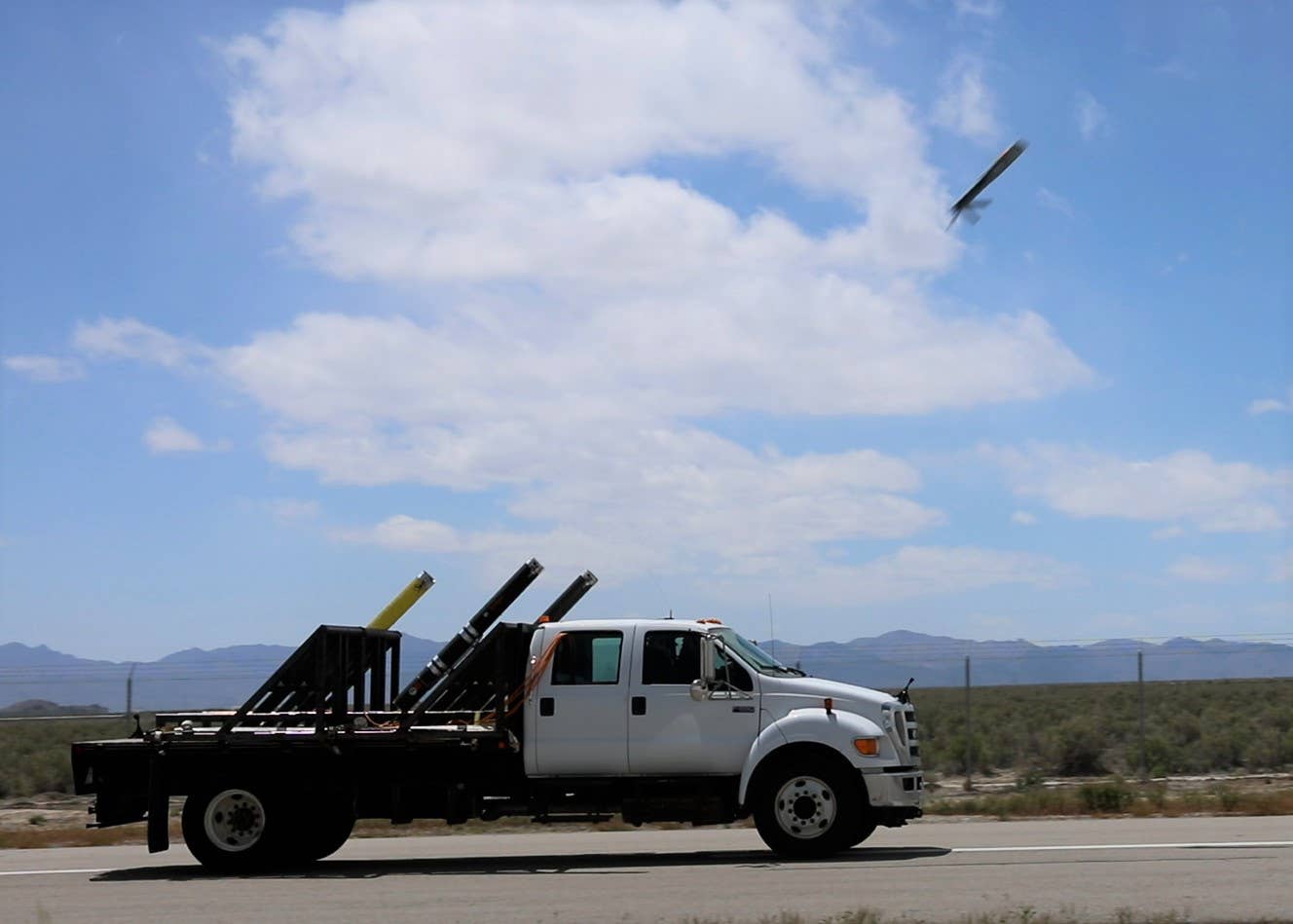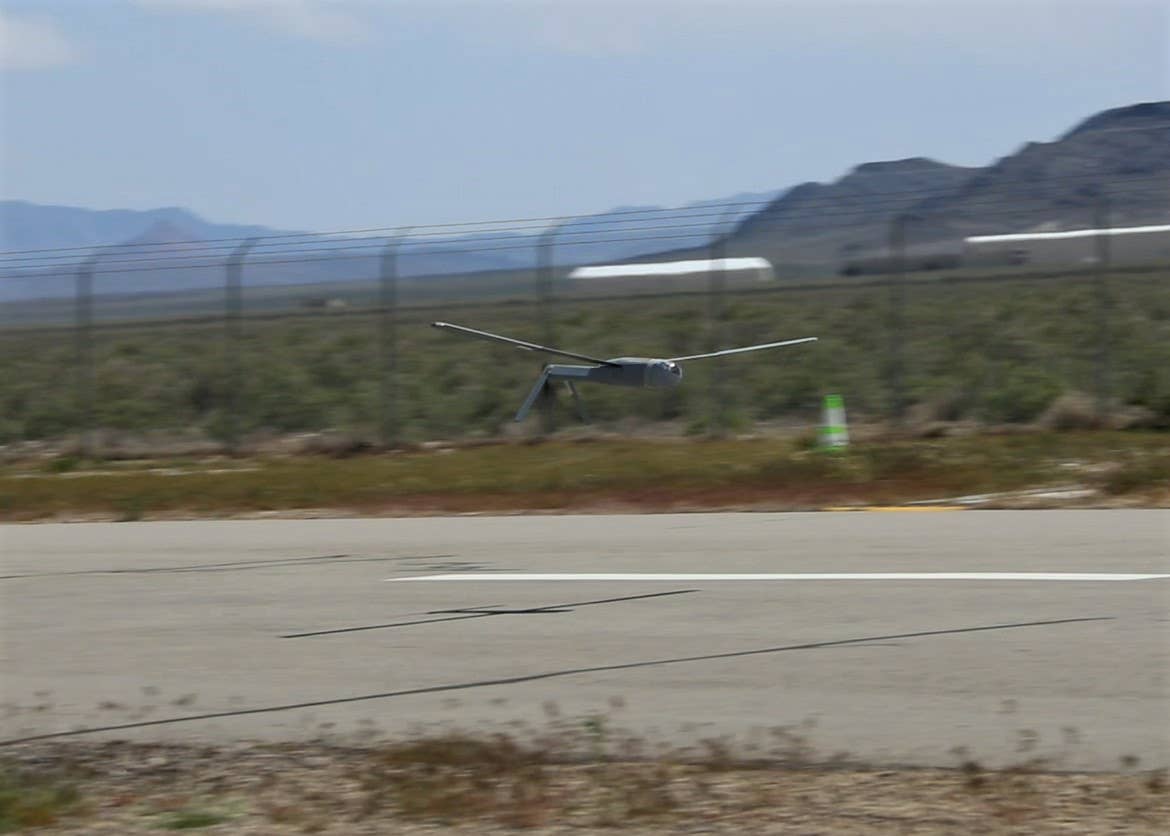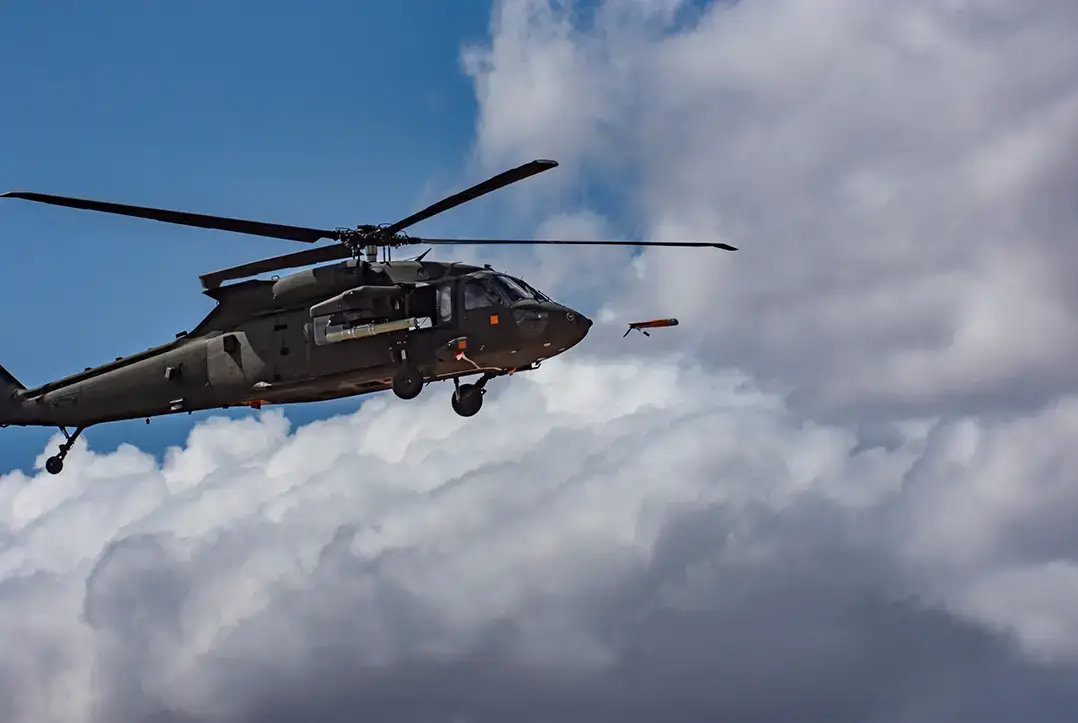DAN PARSONS

In the Army's most recent aviation experiment, four waves of seven drones were launched into the Utah sky in the largest networked 'interactive' sortie of 'Air-Launched Effects' (ALE) unmanned aerial vehicles of its kind to date. A single operator was able to control the resultant swarm of drones as they hunted for and destroyed simulated enemy positions ahead. Some details about the test were announced in advance, as you can read about in The War Zone's initial reporting, but now we are getting a far clearer view of exactly how the potentially historic exercise went down.
Launching the 28-drone operation, all controlled and overseen by a surrogate for the Army's Future Attack Recon Aircraft (FARA), was the culminating event at the service's 2022 Experimental Demonstration Gateway Exercise (EDGE 22) held earlier this month at Dugway Proving Ground in Utah. The notional FARA was played at times by crewed UH-60 Black Hawk and others an uncrewed MQ-1C Gray Eagle. The throngs of smaller drones, the ALEs, were launched from aircraft, as well as several ground vehicles serving as surrogate helicopters.
 A truck with multiple ALE launchers sends a drone skyward during EDGE 22. U.S. Army
A truck with multiple ALE launchers sends a drone skyward during EDGE 22. U.S. ArmyCarrying various sensing equipment, the ALEs gathered information about enemy positions and fed reconnaissance and targeting data back to a manned UH-60, ground troops, and to subsequent waves of drones through a mesh tactical network, a spokesperson for the Army’s Future Vertical Lift Cross-Functional Team (FVL CFT) told The War Zone.
The exercise sought to prove the concept that a networked swarm of unmanned aircraft could fly deep into enemy territory to gather information on the intended landing zone for a crewed helicopter air assault mission. Converging on the target area, the drones detect enemy forces using nose-mounted cameras, infrared sensors, or electronic warfare payloads that can detect signals emissions.
The previously released Army video below depicts exactly the kinds of ALE mission profiles demonstrated during EDGE 22.
In this case, the ALEs were all Area-I Air-Launched, Tube-Integrated, Unmanned System 600 (ALTIUS 600) drones. Each was equipped to conduct reconnaissance to detect, identify, locate and report back enemy positions, according to the FVL CFT. The swarm then simulated what the Army is calling a “stimulate, hunt, kill and assess tactic.”
We don't know for sure how the ALTIUS-600s were configured for this particular event, but the drone weighs between 20-and 27 pounds, depending on its payload. It has a range of 276 miles and can stay aloft for at least four hours. It launches from either a Pneumatically Integrated Launch System (PILS), the Common Launch Tube (CLT), and the Reconfigurable Integrated-weapons Platform (RIwP). It can carry a variety of payloads to perform a range of intelligence, surveillance, and reconnaissance (ISR) and signals intelligence (SIGINT) missions. ALTIUS can also be fitted with a warhead for offensive missions or used as a counter-drone weapon using Lockheed Martin’s MoRFIUS or Mobile Radio Frequency-Integrated UAS Suppressor. The FVL CFT posted a clip of an ALTIUS being launched from a ground-based catapult to Twitter.
In a post-experiment blog post on its website, Area-I said ALTIUS “was key to achieving EDGE 22’s technological goals, including demonstrating its autonomous teaming capabilities as part of the largest ALE swarm to date.”
In a previous interview, Maj. Gen. Walter Rugen, who heads the FVL CFT, said the goal was to launch a 30-drone swarm. Area-I said even the 28-aircraft flying at EDGE was the “largest demonstration of collaborative teaming with multiple ALTIUS platforms” at once.
 An ALTIUS 600 flies low over a runway at Dugway Proving Ground in Utah. U.S. Army.
An ALTIUS 600 flies low over a runway at Dugway Proving Ground in Utah. U.S. Army.The engineers modified a truck with multiple launch tubes to help carry out the swarm experiment, given the large number of ALE drones in each wave. Once launched, the swarm was tasked and controlled by a FARA surrogate, according to the FVL spokesperson.
“The advanced teaming software provided advanced autonomy, team-based mission execution, collaborative operations even in degraded environments, and the next iteration of human-machine interfaces that enable multiple ALEs to execute tactical missions as an integrated team while minimizing workload for the human crew,” the spokesperson said.
Within Army Futures Command, the FVL CFT is developing next-generation aviation capabilities like ALEs, the FARA aircraft that will assume the armed scout role vacated by the retirement of the OH-58D Kiowa Warrior, and the Future Long-Range Assault Aircraft replacement for the UH-60 Black Hawk.
 An ALTIUS-600 is launched from a UH-60 Black Hawk at Yuma Proving Ground, Arizona. Courtesy photo provided by Yuma Proving Ground. U.S. Army
An ALTIUS-600 is launched from a UH-60 Black Hawk at Yuma Proving Ground, Arizona. Courtesy photo provided by Yuma Proving Ground. U.S. ArmyThe U.S. Army Combat Capabilities Development Command Aviation & Missile Center (AvMC) said the demonstrated collaborative teaming technology greatly reduces operator workload while significantly expanding the number of eyes in the sky for any given mission.
“Most importantly, the ALE performing these behaviors were controlled by a single operator,” the AvMC said in a pair of tweets. "12 months ago these same operations would have required 3-4 people, which is a testament to the software’s ability to greatly reduce the operator workload."
Asked whether there were any technical or operational hiccups during the complex manned-unmanned teaming experiment, the CFT spokesperson said that “as with any experimentation, a lot of learning occurred. “Challenges were identified, studied, and adjustments made to support our learning outcomes and eventually launch and execute a seven-ship wave.”
ALE is shorthand for various unmanned systems launched from aircraft that can then be controlled by the aircraft crew or fly autonomously and feed information back to both the helicopter and networked ground troops. The Army plans to field several tiered ALE capabilities in various sizes and mission profiles. Demonstrating the ALTIUS swarm at EDGE is just a first step to realizing a much larger ALE operational plan, for which other drone models also are being evaluated.
Highly autonomous swarms that provide distributed sensing, electronic attack, and kinetic attack capabilities over a wide area, similar to the one tested at EDGE 22, are seen as becoming absolutely critical to winning future battles, such as one with China over Taiwan.
EDGE 22 is this year’s edition of one in a series of rolling experimentation exercises hosted by the Army to evaluate new technologies and operational concepts. Aside from the FVL team that led the event, at least 20 other Army offices and government agencies participated. Lessons learned during EDGE will feed directly into the larger, more comprehensive Project Convergence 2022 (PC 22) later this year.
FVL personnel are not yet authorized to describe what technologies will be tested, or tactical scenarios will play out at PC22, which the Army will host at Yuma Proving Ground in Arizona. The primary themes of PC22 are working with other services and international partner militaries to establish an integrated air and missile defense network, employ long-range fires against anti-access and area-denial defenses and identify technologies vulnerable to attack in complex environments.
That is a long way of saying the Army is trying to figure out how to fight in complex environments against enemies with sophisticated defenses that rival or, in some ways, even exceed the capabilities of its own. The War Zone will report details of specific technologies the Army plans to test at PC22 as they become available.
No comments:
Post a Comment